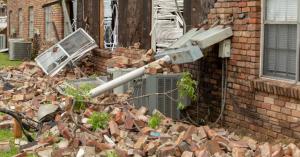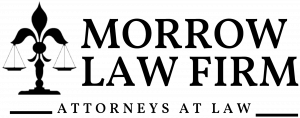
Understanding Louisiana's At-Fault System in Property Damage
William P. Morrow, a lawyer at Morrow Law Firm in Opelousas, Louisiana, explains the importance of understanding the at-fault framework. “The at-fault system in Louisiana determines not only who is liable but also how compensation is distributed when multiple parties are involved,” states Morrow.
Louisiana’s At-Fault System: The Basics
Louisiana operates under an at-fault or tort-based system for property damage claims. In this system, the party responsible for causing damage is liable for compensating the affected party. Responsibility is typically determined through evidence, investigations, and, when necessary, legal proceedings.
Comparative Negligence
Louisiana’s adoption of a comparative negligence model allows for a more nuanced approach to assigning liability. Under this system, fault can be divided among multiple parties based on their contributions to the incident. Compensation is then adjusted according to the degree of fault assigned to each party.
For example, if a driver is found to be 80% responsible for a car accident, and the other party is 20% at fault, the damages awarded to the less responsible party will be reduced by their 20% share of fault. This model ensures that responsibility is apportioned fairly and reflects the circumstances of the incident.
Key Considerations in At-Fault Property Damage Cases
Several factors play a critical role in determining liability and compensation under Louisiana’s at-fault system.
Evidence and Documentation
In property damage cases, evidence is crucial for establishing fault and determining the extent of damages. Key pieces of evidence may include:
Photographs or video footage of the damage
Witness statements
Police or incident reports
Repair estimates and invoices
Expert evaluations of structural or vehicular damage
The quality and comprehensiveness of evidence can significantly impact the outcome of a claim.
Insurance Implications
Insurance companies play a central role in resolving property damage claims. In an at-fault system, the at-fault party’s insurer is typically responsible for covering damages up to the policy’s liability limits. However, disputes can arise over the extent of coverage, the amount of damages, or the determination of fault.
For property owners, understanding their own insurance policies is equally important. Coverage options such as collision insurance, comprehensive coverage, or homeowner’s insurance may affect the ability to recover damages, particularly when the at-fault party is uninsured or underinsured.
Legal Proceedings
When disputes cannot be resolved through negotiations or insurance claims, legal action may become necessary. Courts evaluate evidence, apply Louisiana’s comparative negligence rules, and make determinations regarding liability and damages. Legal representation is often essential in these cases to navigate the complexities of the at-fault system and ensure that all relevant factors are considered.
Common Scenarios in At-Fault Property Damage Claims
The at-fault system applies to a wide range of property damage scenarios, each with unique considerations.
Motor Vehicle Accidents
In car accidents, the at-fault driver is typically responsible for damages to other vehicles, property, or structures affected by the collision. Establishing fault often involves analyzing traffic laws, road conditions, and driver behavior.
Storm and Weather-Related Damage
While natural disasters are generally not attributed to human fault, secondary damage caused by negligence—such as failing to secure loose objects or maintain tree limbs—may result in liability. For example, if a homeowner’s tree falls onto a neighbor’s property during a storm due to neglect, the homeowner may be deemed partially responsible.
Construction and Renovation Disputes
Property damage arising from construction or renovation projects often involves questions of contractual obligations and negligence. Contractors, subcontractors, or property owners may share liability depending on the circumstances.
Premises Liability
Property owners have a duty to maintain safe premises. Failure to address hazardous conditions, such as broken fences, damaged walkways, or unsecured equipment, can result in liability if these conditions cause damage to neighboring properties.
Navigating the At-Fault System
Understanding Louisiana’s at-fault system is essential for property owners, drivers, and business operators. Taking proactive steps can help protect against liability and streamline the resolution of claims.
Proactive Risk Management
Property owners should regularly inspect and maintain their properties to minimize risks. This includes addressing structural weaknesses, securing loose objects, and complying with local safety regulations.
Insurance Review
Regularly reviewing and updating insurance policies ensures adequate coverage in the event of a property damage claim. Comprehensive and umbrella policies can provide additional protection beyond standard coverage.
Timely Reporting
Promptly reporting property damage to insurers and gathering evidence can strengthen a claim and expedite resolution. Delays may complicate the claims process or result in the loss of critical evidence.
The Role of Legal Guidance
Navigating the complexities of Louisiana’s at-fault system often requires legal insight. Legal representation can assist with:
Evaluating liability and comparative negligence
Negotiating with insurance companies
Representing clients in court or arbitration
Understanding the nuances of the at-fault framework ensures that all parties involved have a fair opportunity to present their case and resolve disputes effectively.
Conclusion
Louisiana’s at-fault system for property damage provides a structured approach to resolving disputes and assigning liability. By understanding the principles of comparative negligence, the role of evidence, and the implications of insurance policies, property owners and other parties can protect their interests and navigate claims with confidence. Whether dealing with minor damage or complex multi-party disputes, knowledge of the at-fault system is an invaluable tool for managing property damage incidents.
Morgan Thomas
Rhino Digital, LLC
+1 504-875-5036
email us here
Visit us on social media:
Facebook
Distribution channels: Culture, Society & Lifestyle, Insurance Industry, Law
Legal Disclaimer:
EIN Presswire provides this news content "as is" without warranty of any kind. We do not accept any responsibility or liability for the accuracy, content, images, videos, licenses, completeness, legality, or reliability of the information contained in this article. If you have any complaints or copyright issues related to this article, kindly contact the author above.
Submit your press release

